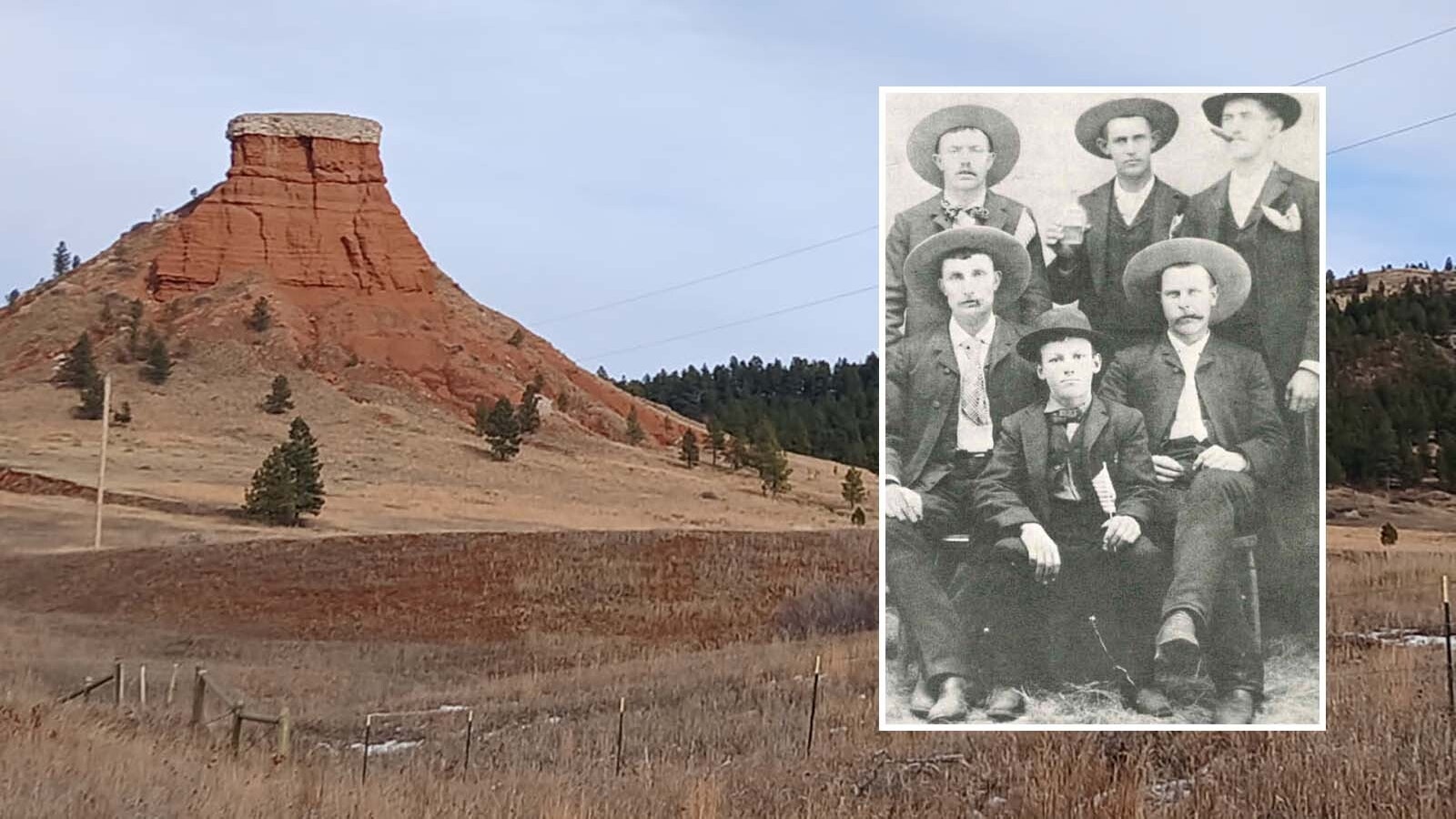The ranking of Wyoming’s 23 counties by number goes back more than 90 years and effectively identifies where cars are from by anchoring the left side of the state’s license plates.
They were started in 1930 when the counties were ranked, but just what those rankings mean has become less and less important and known as the decades have passed. Many think they represent the most to least populated counties, others the order they were officially created and chartered.
They’re all wrong.
Whether those outdated county numbers are still useful or mean anything in 2024 depends on your perspective.
The system behind Wyoming’s county numbers is a fascinating glimpse into the state’s past. And the value of the seemingly erratic system that made sense in 1930 has changed over the last century.
Cents, Not Citizens
Several states include a numeric or alphabetic county designation on their license plates. Wyoming is one of five — the others being Alabama, Montana, Nebraska and South Dakota — where the license plate begins with a county number.
Wyoming issued its first license plate in 1913, but it would be another 17 years before county numbers were required to appear on them.
That’s the claim to fame of Jake Schwoob, a state senator who opened one of Wyoming’s first car dealerships in Cody, who developed the county-based numbering system.
The common perception is that Wyoming’s counties were numbered based on their population circa 1930. Phil Roberts, a historian and emeritus professor at the University of Wyoming, says that’s a common myth.
“Numbers were assigned to each county not on the basis of their populations at the time, but according to the assessed valuation of property within their borders,” he said.
Basically, it ranked how wealthy Wyoming’s counties were at the time, which was quite different from today.
Assessed valuation is based on several factors, including mineral resources, agricultural land and real, personal, and industrial property. Each county assesses its value every fiscal year and submits the statistics to the state government.
Based on assessed values in 1930, Natrona and Laramie counties were Nos. 1 and 2 based on the potential wealth of their mineral rights at the time. Sublette and Teton counties were listed at the bottom for their comparative lack of those resources.
Of course, this was 1930s Wyoming. A lot has changed since then. If Wyoming counties were to be renumbered now the ranking would look much different.
Present Day Value
Times change, and what was true in 1930 is noticeably different in 2024. There’s a lot more value to assess 94 years later, but even a renumbering wouldn’t make much, if any, difference in the day-to-day lives of Wyomingites.
County numbers can reveal economic insights for each county. However, they don’t and have never held any economic or legislative weight in Wyoming, meaning being county No. 1 doesn’t give it any advantage over No. 23.
Buck McVeigh, former chief of staff for Gov. Mark Gordon and former president of the Wyoming Taxpayers Association, cited the state government’s funding distribution as one realm where each county’s assessed valuation matter, but county numbers are entirely irrelevant.
“The funding appointment numbers that matter are the most current decennial population count (by the U.S. Census Bureau) and current population estimates,” he said. “Those are the determinant numbers for the state government.”
Is there any value anymore in prominently displaying county numbers on license plates? McVeigh thinks so.
“As a lifelong resident, I've come to appreciate being able to identify vehicles on the road by their county numbers,” he said. “And it could be an identifier for law enforcement to determine where a vehicle is from.”
Not Noticing Numbers
If there’s any benefit to having county numbers on Wyoming’s license plates, Wyoming Highway Patrol Trooper Jason Simmer hasn’t seen it yet.
“For me, specifically working on the road, it doesn't do a whole lot,” he said. “If I'm driving down the interstate and I see a vehicle exceeding the speed limit by 20 mph, you're not going to see the license plate numbers or anything like that. You only see the violation.”
Simmer tried to think of an example in which a county number would be instrumental in an investigation or prosecution, but he couldn’t think of one. At the end of the day, a license plate is just a license plate.
“I don't know if I've ever met anyone that's had a strong opinion about it,” he said. “I can only speak from my experience, and I don't know how everyone else does their job. I’m from the Laramie County-Cheyenne area, and we don’t use that information very often.”
In fact, county numbers can be somewhat deceptive. Simmer said he knows of many people who deliberately register their vehicles in different counties to get a specific number on their plates.
“People will go and register their vehicle in a different county because they want a specific plate number or something special,” he said. “So, there could be multiples of those plates, but just with a different county designator.”
McVeigh also acknowledged this county-crossing trend, but believes the motivation to get a specific number could be driven by a different kind of number.
“I know residents of Cheyenne who register their vehicles in other counties where the tax rate might be a little bit lower,” he said. “They'll use their property holdings in other counties to register their vehicles elsewhere.”
A Reranking
According to the 2023 Abstract and Mill Levy Report from the Wyoming Board of Equalization, if the state’s county numbering system were to be updated, Campbell County would be the clear No. 1, a huge leap from the No. 17 it was in 1930. That’s because of the 12 large Powder River Basin coal mines that put it head and shoulders above all over counties in assessed valuation.
That county’s assessed value was a whopping $ 5.7 billion in 2023.
Converse County, which was No. 13 in 1930, now would be No. 2 with an assessed value of $4.38 billion.
The Internal Revenue Service reported that Teton County has the highest concentration of wealth per household of any county in the nation. That, more than minerals like Campbell and Converse, pushes Teton to No. 3 now.
In 2023, Teton County had an assessed value of $3.99 billion, followed closely by Sublette County with $3.92 billion. In 1930, Teton and Sublette Counties were Nos. 21 and 22, respectively.
Niobrara County would be at the bottom of the renumbered list. County 14 had an assessed value of $164.7 million in 2023.
Meanwhile, two counties would have the same number after all this time. Fremont County is still No. 10, and Weston County is No. 21.
No Point, Either Way
There’s never been a serious effort to renumber Wyoming’s counties, and it’s unlikely that there will ever be one. After nearly a century, the county numbers are a quirk of state history that unobtrusively and unoffensively exists.
“Personally, I think it's just fine for what it is,” McVeigh said. “It's just one of those things we've come to accept and acknowledge over the years.”
Nevertheless, it’s not easy to recall all the county numbers. Even lifelong resident McVeigh couldn’t remember each county’s number offhand.
“I'm good at identifying the first 13 counties, but after that, it's anyone's guess,” he said.
For anyone curious about what a modern-day renumbering would look like, here are Wyoming’s counties listed in order of their assessed value in Fiscal Year 2023, according to the 2023 Abstract and Mill Levy Report from the Wyoming Board of Equalization. The list shows the counties ranked 1-23 today, compared to their 1930 ranking:
- Campbell: 1, 17
- Converse: 2, 13
- Teton: 3, 22
- Sublette: 4, 23
- Sweetwater: 5, 4
- Laramie: 6, 2
- Natrona: 7, 1
- Lincoln: 8, 12
- Park: 9, 11
- Fremont: 10, 10
- Carbon: 11, 6
- Sheridan: 12, 3
- Albany: 13, 5
- Uinta: 14, 19
- Johnson: 15, 16
- Crook: 16, 18
- Big Horn: 17, 9
- Goshen: 18, 7
- Platte: 19, 8
- Hot Springs: 20, 15
- Weston: 21, 21
- Washakie: 22, 20
- Niobrara: 23, 14
Andrew Rossi can be reached at arossi@cowboystatedaily.com.





